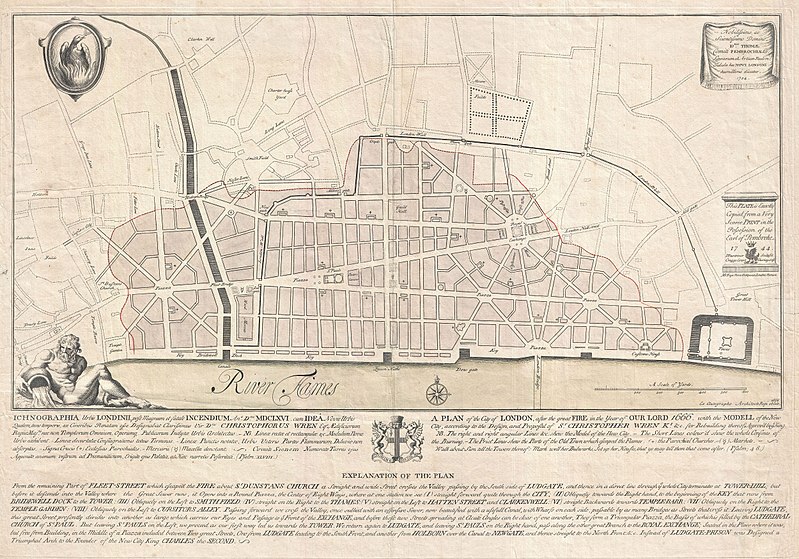Archivo:1744 Wren Map of London, England - Geographicus - London-wren-1744.jpg

Tamaño de esta previsualización: 800 × 559 píxeles. Otras resoluciones: 320 × 224 píxeles · 640 × 447 píxeles · 1024 × 716 píxeles · 1280 × 895 píxeles · 2560 × 1790 píxeles · 5000 × 3496 píxeles.
Ver la imagen en su resolución original (5000 × 3496 píxeles; tamaño de archivo: 4,43 MB; tipo MIME: image/jpeg)
Historial del archivo
Haz clic sobre una fecha y hora para ver el archivo tal como apareció en ese momento.
| Fecha y hora | Miniatura | Dimensiones | Usuario | Comentario | |
|---|---|---|---|---|---|
| actual | 20:42 23 mar 2011 |  | 5000 × 3496 (4,43 MB) | BotMultichillT | {{subst:User:Multichill/Geographicus |link=http://www.geographicus.com/P/AntiqueMap/London-wren-1744 |product_name=1744 Wren Map of London, England |map_title=Ichnographia urbis Londinii… (A Plan of the City of London, after the great FIRE, in the Year |
Usos del archivo
La siguiente página usa este archivo:
Uso global del archivo
Las wikis siguientes utilizan este archivo:
- Uso en ar.wikipedia.org
- Uso en az.wikipedia.org
- Uso en en.wikipedia.org
- Uso en fr.wikipedia.org
- Uso en hu.wikipedia.org
- Uso en id.wikipedia.org
- Uso en ka.wikipedia.org
- Uso en ko.wikipedia.org
- Uso en nl.wikipedia.org
- Uso en pl.wikipedia.org
- Uso en pt.wikipedia.org
- Uso en ru.wikipedia.org

